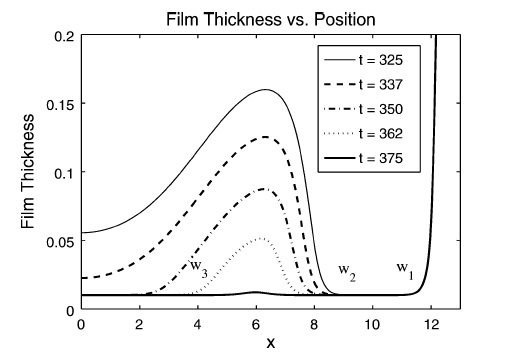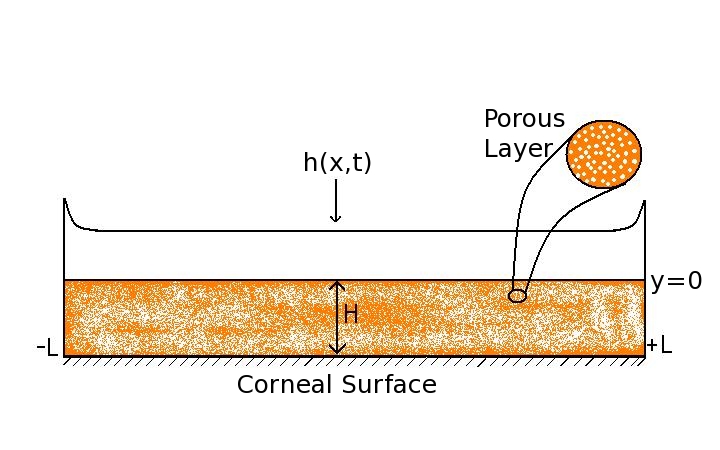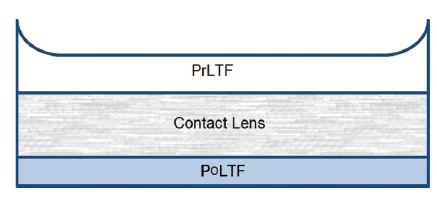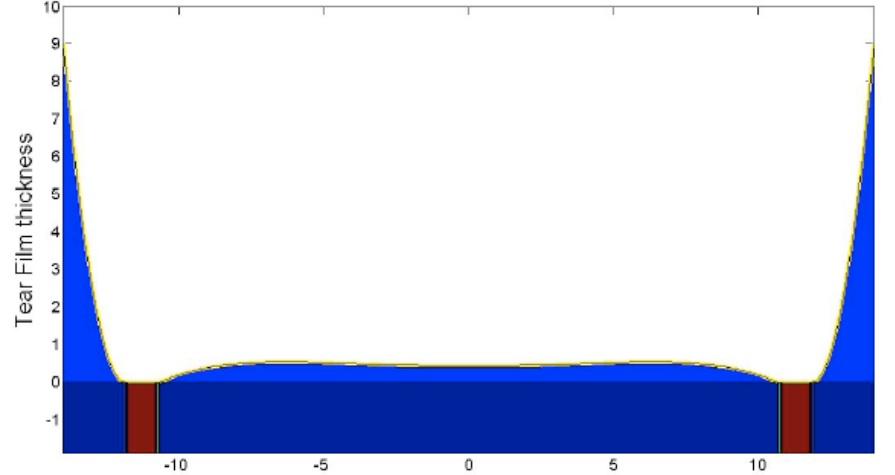Daniel M. Anderson
Contents:
Modeling Wetting and Evaporation of a Post-Blink Precorneal Tear Film
We examine a fluid dynamic model for the evolution of a precorneal tear film that includes evaporation of the aqueous layer and a wetting corneal surface. Our model extends previous work on the break-up time for a post-blink tear film to include a more realistic model for evaporation. The evaporation model includes the effects of conjoining pressure and predicts the existence of an equilibrium adsorbed fluid layer that serves as a model for a wetting corneal surface/mucin layer. The model allows the prediction of dewetting rates that are compared with experimental measurements. By choosing an expected thickness where evaporation and conjoining pressure balance, we obtain qualitative agreement for the opening rate with in vivo observations.
The figure below shows snapshots in time of the tear film dynamics predicted by the model. Two `dry patches' are shown opening up as the film evaporates. The `dry' portions of the film actually retain a very thin layer of fluid and models the wetting nature of the corneal surface.

An article on this work has been published in Math. Med. Biol. doi:10.1093/imammb/dqp019 (2009). PDF version of this article.
Thin Film Evolution Over a Thin Porous Layer: Modeling Tear Films on Contact Lenses
We examine a mathematical model describing the behavior of the pre-contact lens tear film of a human eye. Our work examines the effect of contact lens thickness and lens permeability on the film dynamics. Also investigated are gravitational effects and the effects of different slip models at the fluid--lens interface. A mathematical model for the evolution of the tear film is derived using a lubrication approximation applied to the hydrodynamic equations of motion in the fluid film and the porous layer. The model is a nonlinear fourth order partial differential equation subject to boundary conditions and an initial condition for post-blink film evolution. The evolution equation is solved numerically and the effects of various parameters on the rupture of the thin film are studied. We find that increasing the lens thickness, permeability and slip all contribute to an increase in the film thinning rate although for parameter values typical for contact lens wear these modifications are minor. Gravity plays a role similar to that for tear films in the absence of a contact lens. The presence of the contact lens does, however, fundamentally change the nature of the rupture dynamics as the inclusion of the porous lens leads to rupture in finite time rather than infinite time.
The figure below shows the basic geometry of the tear film/porous contact lens model.

An article on this work has been published in SIAM J. Appl. Math. 70 2771-2795 (2010). doi:10.1137/090749748 PDF version of this article.
To Daniel M. Anderson's Homepage
Modeling Evaporating Tear Films on Contact Lenses
Here we examine one and two dimensional models for evaporation of the pre-lens film in the presence of a porous contact lens. We assess the influence of evaporation on both the dynamics of the pre-lens film as well as on the depletion of the post-lens film. This work is ongoing. Stay tuned for updates.
The figure below shows the basic geometry of the tear film/porous contact lens model.


An article on this work has been published in Math. Med. Biol. doi:10.1093/imammb/dqu001 (2014).
To Daniel M. Anderson's Homepage